For as long as we can remember, Humpty Dumpty has been etched in our minds as a fragile, anthropomorphic egg, sitting precariously on a wall. The nursery rhyme that tells of his great fall and the futile efforts to put him back together has been a staple of British culture for generations. However, recent revelations have challenged this long-held belief, leaving many people in shock. Is it possible that Humpty Dumpty was never intended to be an egg? In this article, we’ll dive deep into the origins of this classic character, explore the history behind the rhyme, and uncover why this seemingly innocent figure has sparked so much debate.
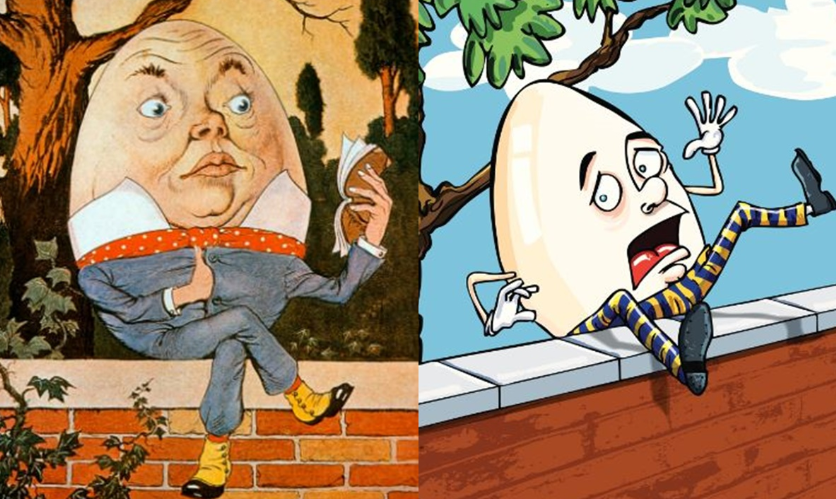
Humpty Dumpty: The Classic Nursery Rhyme
A Childhood Favorite
The nursery rhyme “Humpty Dumpty” is one of the most well-known and beloved in the English language. The simple, rhythmic lines have been recited by children for centuries:
“Humpty Dumpty sat on a wall,
Humpty Dumpty had a great fall;
All the king’s horses and all the king’s men
Couldn’t put Humpty together again.”
These verses paint a vivid picture of a character who experiences a disastrous fall and cannot be restored, but notably, they never mention that Humpty Dumpty is an egg. So, how did this association begin?
The Egg Conundrum
A Misleading Image
Despite the absence of any reference to eggs in the rhyme, Humpty Dumpty has been depicted as one for as long as many of us can remember. This image has been reinforced through countless picture books, cartoons, and even literary adaptations. A significant influence on this perception was Lewis Carroll’s Through the Looking-Glass, where Humpty Dumpty is explicitly described as an egg. Over time, this depiction has become so ingrained in popular culture that the idea of Humpty Dumpty being anything other than an egg seems almost absurd.
The Unexpected Origins
A Symbol of Political Struggle?
The origins of Humpty Dumpty are far more complex and intriguing than the simple egg image we’ve come to know. Some historians believe that Humpty Dumpty originally represented something much more significant. One theory, supported by Jane Etheridge, Vice Chair of the Federation of Children’s Book Groups, suggests that Humpty Dumpty was a symbolic representation of a Royalist cannon used during the English Civil War. This cannon, positioned on a wall, was said to have fallen and been irreparably damaged—a possible metaphor for the Royalist defeat.
The King Richard III Connection
Another fascinating theory links Humpty Dumpty to the downfall of King Richard III at the Battle of Bosworth Field in 1485. In this context, Humpty Dumpty could symbolize the king himself, whose defeat marked the end of the Wars of the Roses and the beginning of the Tudor dynasty. The “great fall” in the rhyme could then be interpreted as the king’s dramatic and final defeat.
The Role of Roundhead Propaganda
Political Satire in Disguise
The English Civil War was a period marked by intense propaganda, much of which came from the Roundheads (supporters of Parliament) against the Royalists. Some suggest that the character of Humpty Dumpty may have been used as a satirical figure to represent the fragility and eventual downfall of the Royalists. This interpretation would make Humpty Dumpty a character steeped in political symbolism rather than the innocent egg we imagine today.
Why the Egg?
The Evolution of a Symbol
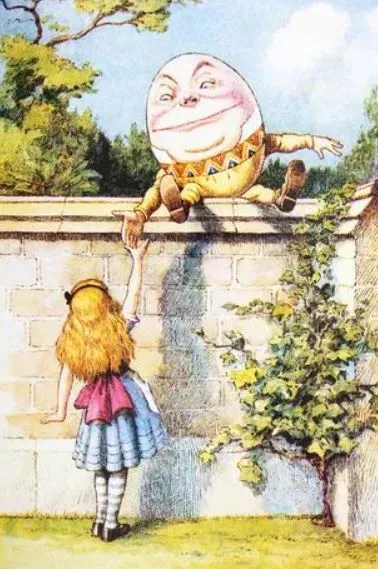
So, how did this potentially political or historical figure become an egg? The transformation likely began with artistic interpretations that sought to make the rhyme more visually appealing and accessible to children. The idea of a fragile egg that shatters upon falling is a powerful visual metaphor, one that perfectly fits the theme of the nursery rhyme. Over time, this interpretation stuck, and the egg-shaped Humpty Dumpty became the dominant image in popular culture.
The Social Media Revelation
A Collective Shock
The recent resurgence of interest in Humpty Dumpty’s true origins can be traced back to social media, where author Holly Bourne sparked a viral discussion by questioning the widely accepted depiction of the character as an egg. Her post on X (formerly Twitter) brought this issue into the spotlight, causing many to rethink what they thought they knew. The reaction was swift and varied, with some people expressing disbelief, while others found the revelation amusing or even unsettling.
Public Reactions
From Surprise to Acceptance

The public’s response to this revelation has been a mix of shock, curiosity, and humor. Some people joked about their lifelong belief being shattered, while others pointed out that many nursery rhymes have darker, more complex origins than we often realize. One comment humorously speculated that the egg depiction was adopted to make the nursery rhyme less traumatic for children, given the often gruesome nature of traditional rhymes.
The Deeper Meaning of Nursery Rhymes
Not Just Child’s Play
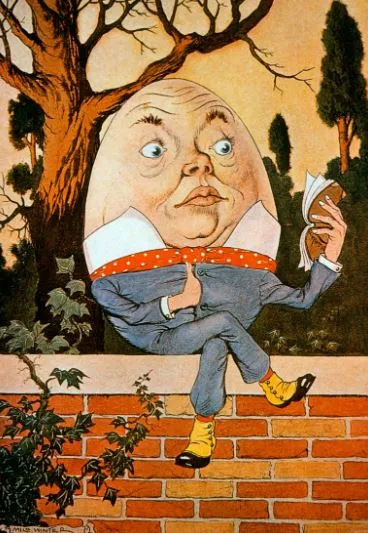
The Humpty Dumpty revelation is a reminder that many nursery rhymes have layers of meaning that go beyond the surface. For example, “Ring-a-Ring o’ Roses” is often interpreted as a reference to the Great Plague, while “Jack and Jill” is thought to have political connotations. These rhymes were originally meant to convey moral lessons, political satire, or commentary on contemporary events, wrapped in a form that was easy to remember and pass down through generations.
The Evolution of Folklore
How Stories Change Over Time
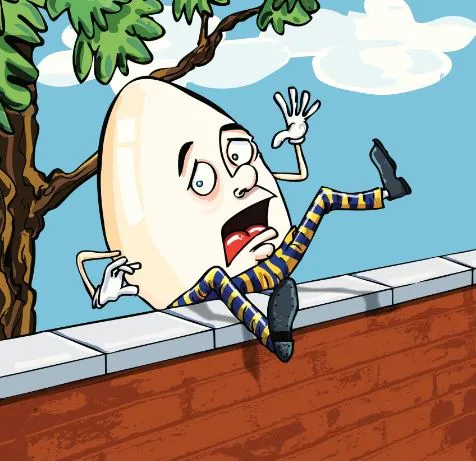
The story of Humpty Dumpty’s evolution from a possibly political figure to a fragile egg is a perfect example of how folklore adapts and changes over time. As stories are retold, they often take on new meanings and interpretations that reflect the values and needs of the time. In the case of Humpty Dumpty, what may have started as a metaphorical or symbolic character has been transformed into an iconic image that is now a staple of childhood education and entertainment.
Why It Matters
Understanding Cultural Shifts
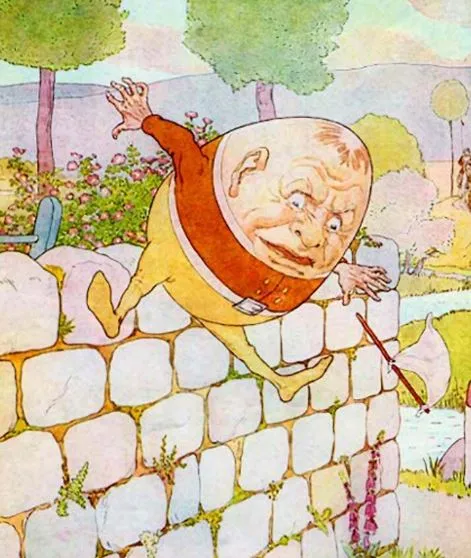
While the revelation about Humpty Dumpty might seem trivial at first glance, it actually highlights the broader phenomenon of how cultural symbols evolve. The transformation of Humpty Dumpty into an egg reflects the way societies reinterpret and repurpose stories to fit their own needs and sensibilities. It also underscores the importance of questioning and critically examining the origins of the stories and symbols that shape our understanding of the world.
The story of Humpty Dumpty is a fascinating journey through history, folklore, and cultural evolution. What began as a potentially symbolic or metaphorical character has been reimagined and simplified into the egg-shaped figure we all know today. This evolution speaks to the power of storytelling and the ways in which stories can change over time to meet the needs of different audiences. While the truth about Humpty Dumpty’s origins may be surprising, it also serves as a reminder of the fluid nature of folklore and the importance of looking beyond the surface.


